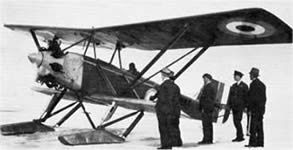| Vigil | |
|---|---|
 | |
| General information | |
| Type | Patrol Aircraft |
| National origin | Canada |
| Manufacturer | Canadian Vickers |
| Primary user | Royal Canadian Air Force |
| Number built | 1 |
| History | |
| Introduction date | 11 May 1928 |
| Retired | 3 November 1930 |
The Canadian Vickers Vigil was a single-seat patrol aircraft designed to meet a Royal Canadian Air Force requirement for a forest fire patrol aircraft.
